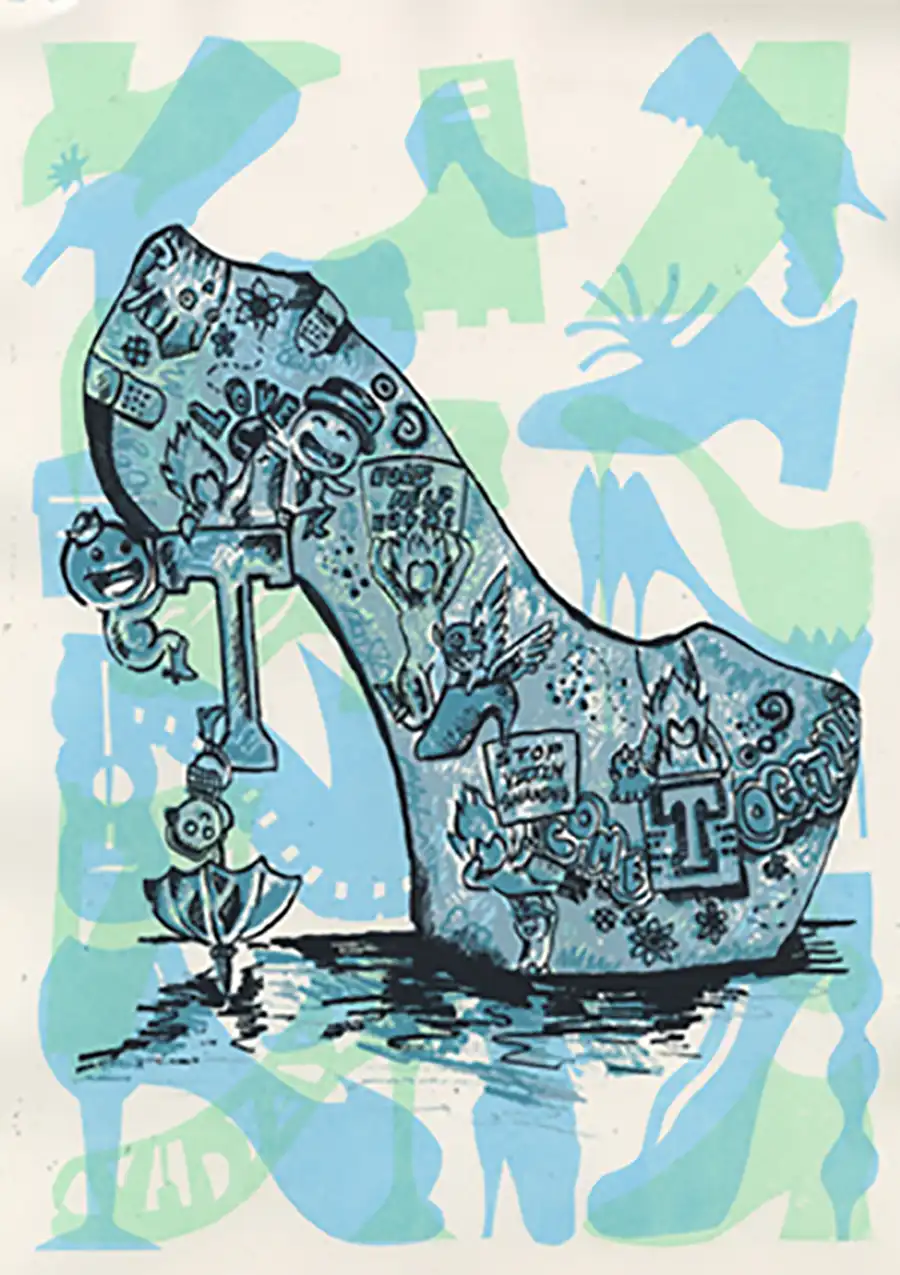Prints and the Public Sphere

One of the reasons people make art is to effect change in the world. As multiples, printmaking has a long history of social and political activism. Two projects from my classes offer examples of how prints, as part of projects on the UT campus, can engage the public sphere.
In October 2017, Austin artist Kyle Schlesinger, founder of Cuneiform Press and professor of publishing at the University of Houston-Victoria came to Knoxville. His visit was sponsored by the UT School of Art, Department of English, and Printmaking Program. Schlesinger, who is best known for his letterpress work and limited edition collections of poetry, completed a series of screen-printed posters made in collaboration with our faculty and students titled A People’s Curriculum for the United States.
This project, modeled after Howard Zinn’s A People’s History of the United States, was a “public poster initiative written, printed, and distributed by the people and for the people.” Schlesinger first began the project as a series of letterpress posters he distributed in Austin following the November 2016 presidential election. A People’s Curriculum for the United States sought “to ask us to ask ourselves, and one another, what America needs to (re)learn in the new political order.” For the Knoxville version of the project, we worked with Schlesinger to complete 11 different posters; each produced in 100 copies free distribution.
The development of ideas for the project was very collaborative. Prior to Schlesinger’s campus visit, students held a Skype session with him and discussed messages on civility, diversity, and other themes that could be part of the project. After initial discussions and individually generated ideas, the selection of the final set of posters was an exercise in democracy as the participants narrowed and edited the messages to be printed. Some of the completed posters read “Know Your Privilege,” “Is It That Simple?,” “Make Space for Dissent,” “Apply Empathy to World Problems,” and “Love is an American Value.” One poster, “I Respectfully Disagree with You,” was printed in preparation for a controversial campus speaker the following week. In three hours, more than 700 of the posters were distributed and displayed in dorm rooms and offices on campus.
For a separate project during the spring 2018 semester, students in the Intermediate Printmaking Workshop each produced a screen-printed poster for the Sixth Annual Hike the Hill in Heels. Sponsored by the UT Center for Health Education and Wellness, the event serves as a kick-off for Sexual Assault Awareness Month in April. Participating students, faculty, and staff who marched in high heels from the Humanities Plaza up the hill to Ayres Hall could select one of the posters as a keepsake. As a form of footwear that is uncomfortable, high heels are intended to represent the need to discuss uncomfortable subjects such as sexual assault. The event is also part of the university’s efforts to address compliance with Title IX.
Student interpretation of the assignment reflected a diversity of themes and ideas, including one shoe that was part of a prosthetic and another with Tennessee iconography. Because the Center for Health Education and Wellness funded the cost of the paper, the project provided printmaking students a chance to experience printing large editions, while also getting to see the power of the print in the public sphere.
by Beauvais Lyons
Beauvais Lyons, professor of art at the University of Tennessee, Knoxville, won the 2017 SECAC Award for Excellence in Teaching, which was presented October 26, 2017, at the annual awards luncheon in Columbus, Ohio, during the 73rd meeting of SECAC. This award is made in recognition of outstanding teaching by a SECAC member who demonstrates an exceptional command of his or her discipline through the ability to teach effectively, impart knowledge, and inspire students.
The awards committee noted that Lyons has had an impressive, expansive, and long career as an artist, a printmaker, and an educator. Letters of support from a number of former students, many now educators themselves, spoke to his skill as a teacher and patience as a mentor. It was clear to the committee that Lyons’s influence on his students has been deep, long lasting, and built on mutual respect. The committee stated, “We were impressed by the fact that so many consider him to be a critical role model even years after they were students themselves.”